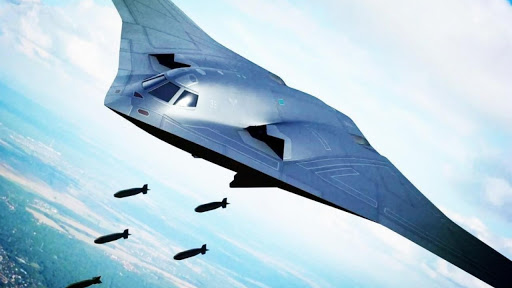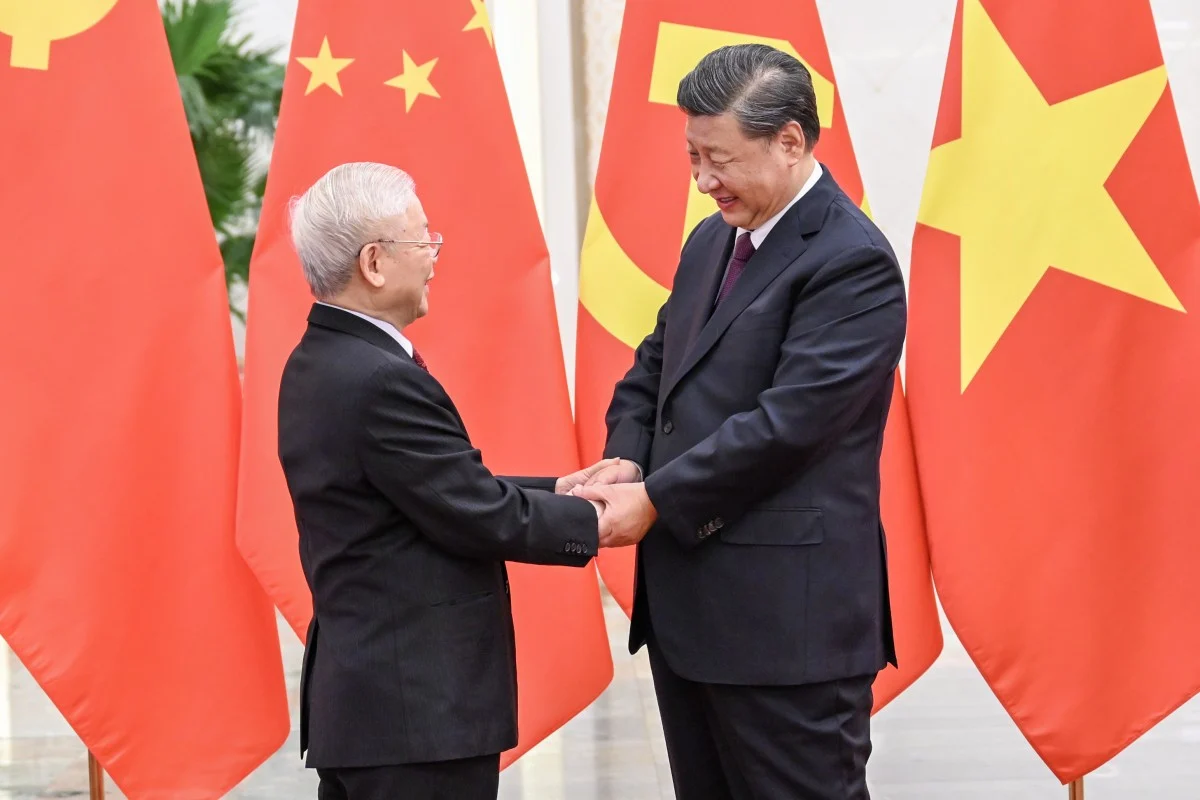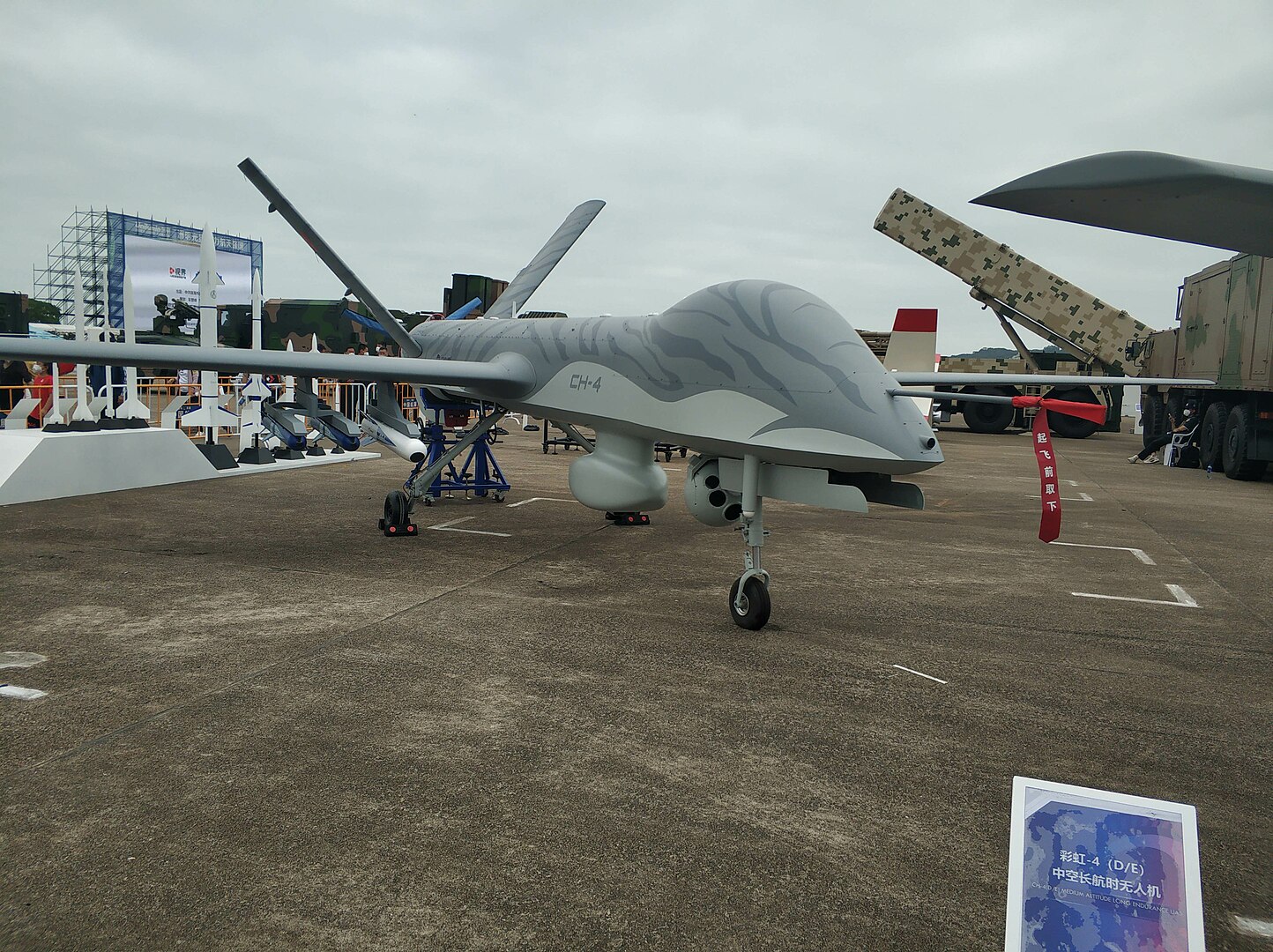
Artist’s rendering of what China’s H-20 strategic bomber could look like.
“When commissioned, the H-20 will become a new quality combat force, serve as a powerful strategic deterrent and contribute to the safeguard of [Chinese] national sovereignty, security, and development interests, as well as peace and stability in the region and around the world.”
Eight years after its initial announcement, China’s new long-range bomber, the H-20, is about to be realized.[i] The H-20 is planned to replace China’s most advanced current bomber, the H-6K. According to the first excerpted article from the Chinese Communist Party affiliated Global Times, the People’s Liberation Army Air Force (PLAAF) commander Wang Wei announced that the project was moving forward with no “bottlenecks” and all issues resolved. The H-20 will be a significant step up from the H-6K [R1] in both range and payload. When commissioned, the H-20 will use stealth technologies to avoid detection and will be able to launch a variety of weapons with both conventional and nuclear payloads. The second excerpted article from a Chinese news source. NetEase, describes the H-20’s utility and assesses the need for a stealth bomber. Notably, the article suggests that the H-20 will have a range up to 10,000 kilometers, giving it the ability to strike intercontinental military targets. An additional, though contradictory, statement from the PLAAF notes that the H-20 boasts a range of 8,500 kilometers with a payload of at least 10 metric tons.[ii] Should the H-20 live up to expectations, the H-20 will give China the ability to strike the United States, Australia, and other Pacific allies while remaining entirely undetected.
Sources:
Liu Xuanzun, “China’s in-development H-20 bomber worth the excitement: PLA Air Force deputy commander,” Global Times (English language newspaper affiliated with the Chinese Communist Party), 11 March 2024. https://www.globaltimes.cn/page/202403/1308604.shtml
China’s long awaited first strategic stealth bomber, the H-20, is worth the excitement, as it faces no technical difficulties in development and will be unveiled to the public soon, said the deputy commander of the People’s Liberation Army (PLA) Air Force at the two sessions in Beijing.
The H-6 series, which is China’s current main combat bomber that has served for decades, is a medium-range subsonic platform without stealth capability, so despite many upgrades and modernization, the aircraft itself cannot penetrate modern air defense, and relies on launching standoff munitions to attack targets, said experts reached by the Global Times.
A next generation stealth bomber, capable of avoiding hostile detection, will enable the launch of more powerful or more cost-efficient munitions at closer range in larger numbers, experts said.
When commissioned, the H-20 will become a new quality combat force, serve as a powerful strategic deterrent and contribute to the safeguard of national sovereignty, security and development interests, as well as peace and stability in the region and around the world
Yangmen Bojin, “轰20航程或超预期!中国用一流反隐身能力铸剑,美应抓紧撤往东太 (The range of the H-20 may exceed expectations! China uses first-class anti-stealth capabilities to forge swords, the United States should hurry up and withdraw to the East Pacific),” NetEase (Chinese news site), 15 March 2024. https://m.163.com/dy/article_cambrian/ITAHENIN0553AA62.html
“The H-6 series bombers have serious shortcomings in terms of stealth, speed, and bomb load. In this context, it is very necessary to develop a new strategic bomber. H-20’ bomber’s range is expected to be at least 8,000 kilometers, with a maximum range of more than 10,000 kilometers.”
“The distance from our country to San Francisco is about 9,600 kilometers. If the ‘H-20’ bomber has a range of more than 10,000 kilometers, it can only reach Alaska and some islands in the Pacific, as well as the U.S. deployment bases in Australia.”“It should be pointed out that the reason why my country’s H-20 bomber has not reviled is likely due to it being continuously upgraded. For stealth bombers, the most fatal problem is that the stealth capabilities is seen by the other party. Once the stealth advantage is lost, the stealth bomber is not even comparable to a conventional bomber.
Notes:
[i]Zhao Lei, “PLA Air Force commander confirms new strategic bomber,” China Daily, 2 September 2016. https://www.chinadaily.com.cn/china/2016-09/02/content_26683883.htm
[ii]Liam Gibson, “US Air Force secretary says new planes must intimidate China,” Taiwan News, 5 December 2021. https://www.taiwannews.com.tw/en/news/4365995
Image Information:
Image: Artist’s rendering of what China’s H-20 strategic bomber could look like.
Source: https://desarrollodefensaytecnologiabelica.blogspot.com/2020/05/china-presentara-el-bombardero-sigiloso.html
Attribution: CCA-SA 4.0 Intl.



